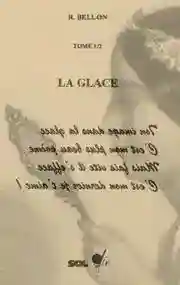Maithili love poem
अयना
अयना मे आहक छबी,
हमरा लेल कबिता थीक सुन्दर्तम,
देख लिय नही त बिला जायत ओ,
अन्तिम बेर कहैत छि "प्रीती करैत छि हम"!

With the Tirhuta Abugida
𑒁𑒨𑒢𑒰
𑒁𑒨𑒢𑒰 𑒧𑒹 𑒂𑒯𑒏 𑒕𑒥𑒲,
𑒯𑒧𑒩𑒰 𑒪𑒹𑒪 𑒏𑒥𑒱𑒞𑒰 𑒟𑒲𑒏 𑒮𑒳𑒢𑓂𑒠𑒩𑓂𑒞𑒧,
𑒠𑒹𑒐 𑒪𑒱𑒨 𑒢𑒯𑒲 𑒞 𑒥𑒱𑒪𑒰 𑒖𑒰𑒨𑒞 𑒍,
𑒁𑒢𑓂𑒞𑒱𑒧 𑒥𑒹𑒩 𑒏𑒯𑒻𑒞 𑒕𑒱 "𑒣𑓂𑒩𑒲𑒞𑒲 𑒏𑒩𑒻𑒞 𑒕𑒱 𑒯𑒧"!
Romanization
Ayanā
Ayanā me āhaka chabī,
Hamarā lela kabitā thīka sundartama,
Dekha liya nahī ta bilā jāyata o,
Antima bera kahaita chi "prītī karaita chi hama"!

→ French poem ←
Maithili language
Love poem translated into Maithili (different possibilities : Methli, Mythili, Mithelee, Thenthi, Dehati, Tirhutia, Tati, Eastern Maithili, Thetiya, Makrana, Tirhuti, Jolaha, Bajjika, Southern Standard Maithili, Kisan, Sotipura, Apabhramsa, Kawar, Khotta, Barei, Maitli, Maitili, Kortha, Tirahutia, Central Colloquial Maithili, Kyabrat, Standard Maithili, Musar, Barmeli, Bihari, Western Maithili, Bantar, Kortha Bihari, Autonym : मैथिली).
You live in the region of Mithila, and it is one of the two languages that you speak, the other is called love! Your language is an Indo-Aryan language, spoken by 25 million people.
Are you Nepalese or Indian? Are you really from Mithila? You are from no country and all at once, because you are simply of the human race.
Maithili, is an Indo-European language, spoken in the northern and eastern regions of Bihar a state in northeastern India, and southeastern Nepal (Tarai), and has an official language status.
In number of speakers it is the 15th language of India and the second of Nepal.
Maithili, strongly influenced by Bengali, is considered by some to be one of its dialects; others consider it as a dialect of Bihari (descendant of the Gaudian language derived from Magadhi), but the majority of linguists consider it a language in its own right.
It is believed that during the migrations of the Aryans in the regions, these would have been done in several stages, at least in two stages, the second waves of Aryans pushing the first to move, which would explain the parallels and the differences between the languages of this large region.
The Maithili has many variations but it is often those of the Brahmins of Bhagalpnr and Darbhanga, and of Purnea which are considered the most classic.
Its alphabet for writing it, is mithilakshar, but devanagari is also very frequently used.
Maithili literature
The Maithili has a very rich folk literature for a long time.
There has been a rather rich poetry since the 15th century, and in the 19th century Maithili was declared a separate language from Bihari.
The Caryapadas which date from the 9th century, although there is controversy, are undoubtedly written in an ancient form of the Maithili.
Varna Ratnakara writed by Jyotirisvara Kavisekharacarya is considered to be the first text written in Maithili. If it dates from the 14th century, we know it from a transcription at the beginning of the 16th century with the Mithilaksar script.
Vidyapati in the 14th century is considered the greatest Maithili poet.
The golden age of the language is around the 16th century. At that time, Maithili, which was the mother tongue of important royal families, reigned supreme over the region and even further afield.
It is in this century the one compose poems and texts in prose; it is at the same time the language of an entire society, their language of culture and even a vehicular language throughout this region of northeast India and Nepal. The Vism Vaisna religion will be broadcast in Maithili.
In the 17th century it will begin to lose its importance.